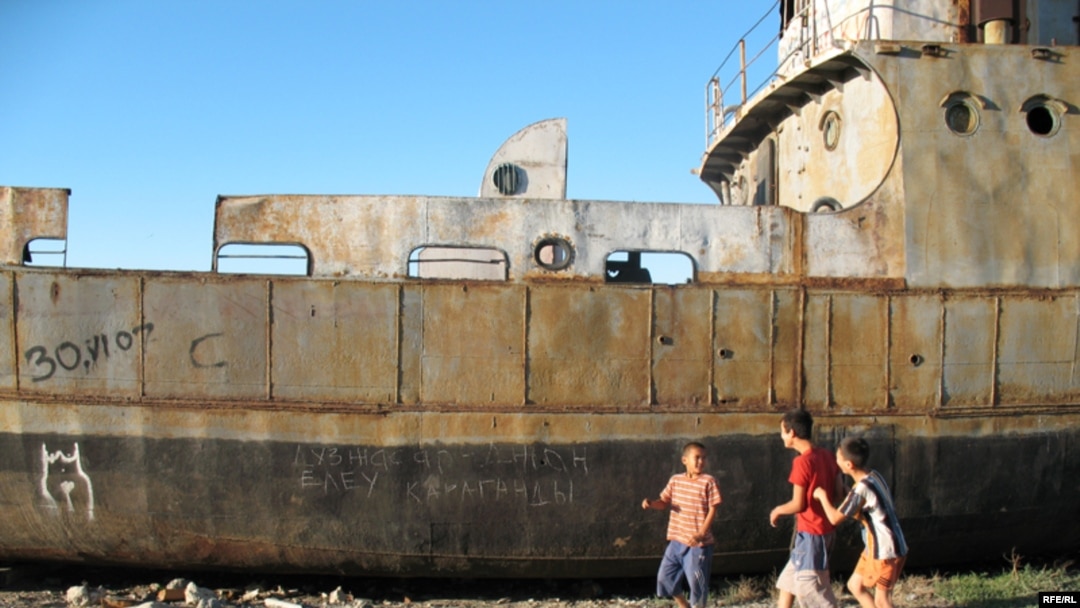BONN, Germany (Reuters) - A legacy of environmental neglect by the Soviet Union makes countries from Poland to Central Asia more vulnerable than previously expected to climate change, the World Bank said.
Two decades after the fall of the Berlin Wall, it said the region faced risks including the possibility that communist-era pollution trapped in soils could leach out, or that poorly constructed ports, roads, or homes may not withstand climate shifts.
"The impact of climate change in the Europe and Central Asia region will be more significant than expected due to a lingering post-Soviet legacy of environmental mismanagement and the poor state of much of the region's infrastructure," it said.
"Chronic environmental mismanagement is perhaps the most dangerous holdover from the past," stated the report released on the sidelines of 181-nation talks taking place in Bonn from June 1-12 to work on a new climate treaty.
A projected fall in levels of the Caspian Sea as the region dried, for instance, "means that the population will come into contact with a range of dangerous substances -- pesticides, arsenic -- presently locked in coastal sediments," it said.
"Many countries are already suffering from winter floods and summer droughts -- with both southeastern Europe and Central Asia at risk for severe water shortages," said Marianne Fay, a director of the World Bank's World Development Report 2010.
A flood in Romania in 2000, for instance, brought cyanide-laced water from a gold mining operation into the Tiza and Danube rivers. In Poland, about 5 million people live in apartments that need renovation to withstand changes in temperatures or rainfall.
The legacy of the Soviet Union -- in its 15 former republics and in the wider region that it dominated -- was likely to last for 10-20 more years while infrastructure was upgraded.
The report said former east bloc nations, as well as Turkey, were warming fast. Temperature rises range from 0.5 Celsius (0.9 Fahrenheit) in the south to 1.6 C in Siberia in the north in the past century.
"Overall increases of 1.6-2.6 Celsius are expected by the middle of the century," it added. By 2050, countries such as Poland or Hungary were expected to have the same number of hot days, of above 30 Celsius, as today's Spain or Sicily.
"Contrary to popular perception, the region is significantly threatened by climate change," the report said.
Many people have suggested that places such as Siberia might benefit from global warming that could make more regions suitable for farming. Russian Prime Minister Vladimir Putin once mused that Russians might benefit from less bone-chilling winters that would cut the need for them to buy fur coats.
"Much has been made of the fact that warmer climate and abundant precipitation in the northeastern part of Europe and Central Asia - Kazakhstan, Russia, and Ukraine - will open up a new agricultural frontier," the report said.
But it said farming methods were inefficient. "While world grain yields have been growing on average by about 1.5 percent per year, they have been falling or stagnant in these three countries," it said.
Two decades after the fall of the Berlin Wall, it said the region faced risks including the possibility that communist-era pollution trapped in soils could leach out, or that poorly constructed ports, roads, or homes may not withstand climate shifts.
"The impact of climate change in the Europe and Central Asia region will be more significant than expected due to a lingering post-Soviet legacy of environmental mismanagement and the poor state of much of the region's infrastructure," it said.
"Chronic environmental mismanagement is perhaps the most dangerous holdover from the past," stated the report released on the sidelines of 181-nation talks taking place in Bonn from June 1-12 to work on a new climate treaty.
A projected fall in levels of the Caspian Sea as the region dried, for instance, "means that the population will come into contact with a range of dangerous substances -- pesticides, arsenic -- presently locked in coastal sediments," it said.
"Many countries are already suffering from winter floods and summer droughts -- with both southeastern Europe and Central Asia at risk for severe water shortages," said Marianne Fay, a director of the World Bank's World Development Report 2010.
A flood in Romania in 2000, for instance, brought cyanide-laced water from a gold mining operation into the Tiza and Danube rivers. In Poland, about 5 million people live in apartments that need renovation to withstand changes in temperatures or rainfall.
The legacy of the Soviet Union -- in its 15 former republics and in the wider region that it dominated -- was likely to last for 10-20 more years while infrastructure was upgraded.
The report said former east bloc nations, as well as Turkey, were warming fast. Temperature rises range from 0.5 Celsius (0.9 Fahrenheit) in the south to 1.6 C in Siberia in the north in the past century.
"Overall increases of 1.6-2.6 Celsius are expected by the middle of the century," it added. By 2050, countries such as Poland or Hungary were expected to have the same number of hot days, of above 30 Celsius, as today's Spain or Sicily.
"Contrary to popular perception, the region is significantly threatened by climate change," the report said.
Many people have suggested that places such as Siberia might benefit from global warming that could make more regions suitable for farming. Russian Prime Minister Vladimir Putin once mused that Russians might benefit from less bone-chilling winters that would cut the need for them to buy fur coats.
"Much has been made of the fact that warmer climate and abundant precipitation in the northeastern part of Europe and Central Asia - Kazakhstan, Russia, and Ukraine - will open up a new agricultural frontier," the report said.
But it said farming methods were inefficient. "While world grain yields have been growing on average by about 1.5 percent per year, they have been falling or stagnant in these three countries," it said.


